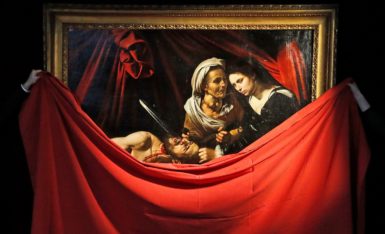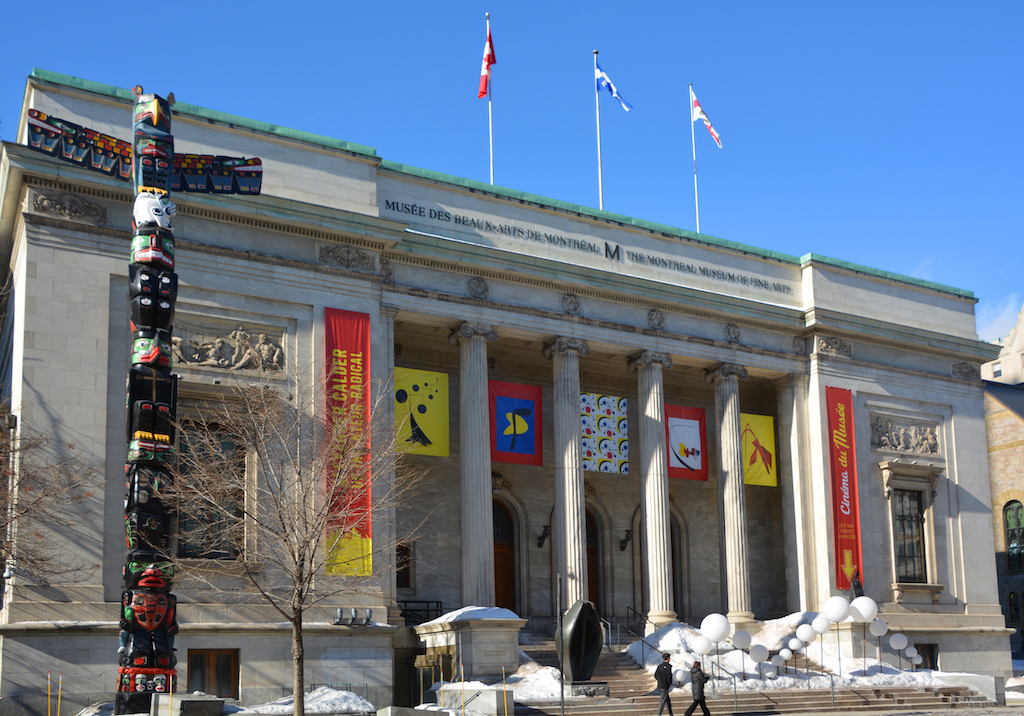[ad_1]

The Montreal Museum of Fine Arts recently acquired a second installation by Rafael Lozano-Hemmer.
SHUTTERSTOCK
“Art En Route” is a biweekly column offering a rundown of some of the most notable acquisitions, loans, and sales in the news cycle.
The Rose Art Museum, which is located at Brandeis University in Waltham, Massachusetts, has acquired Betye Saar’s mixed-media assemblage Supreme Quality (1998), Ralph Coburn’s multi-part painting Random Sequence Participatory Composition (1962), and an untitled 1972 Joe Overstreet painting from his “Flight Patterns” series. Pieces by Haris Epaminonda, Martine Gutierrez, and Pieter Vermeersch also recently entered the museum’s collection. (The Rose is the first American institution to add Vermeersch’s work to its holdings.)
Several institutions have acquired work by María Berrío, whose first Los Angeles solo exhibition opened at Kohn Gallery on June 1. The Whitney Museum in New York, the Yuz Museum in Shanghai, and the Pérez Art Museum in Miami have acquired mixed-media paintings by Berrío. In her practice, the artist often focuses on immigrant experiences.
The San Francisco Museum of Modern Art announced that it purchased 11 works with profits from its sale of Mark Rothko’s Untitled (1960). Pieces by Mickalene Thomas, Frank Bowling, Leonora Carrington, and other artists were acquired as part of the museum’s efforts to diversify its collection. SFMOMA received $42.8 million by deaccessioning the Rothko, though it has not revealed how much of the funds were used for these purchases and how much will go toward an endowment for future acquisitions.
Out in the American Midwest, the Minnesota Historical Society bought a pair of goggles worn by famed pilot Charles Lindbergh. The institution paid $8,500 for the military-issued eyewear from the 1930s. Lindbergh, who was from Little Falls, Minnesota, made the first-ever, nonstop solo transatlantic flight in 1927.
And the Montreal Museum of Fine Arts in Canada has acquired Rafael Lozano-Hemmer’s large-scale photographic installation 1,000 Platitudes (2003), which was shown at the 2007 Venice Biennale. The work joins Last Breath (Último Suspiro), 2012, another installation by Lozano-Hemmer, in the museum’s collection.

The unveiling of Judith and Holofernes, 1607, at Colnaghi gallery.
FRANK AUGSTEIN/AP/SHUTTERSTOCK
One of the biggest headlines out of the auction world surrounds Caravaggio’s painting Judith and Holofernes (1607), which was rediscovered in 2014 in an attic in Toulouse, France. Some experts have doubted the attribution of the unsigned work, but it was estimated to sell for $170 million at Marc Labarbe in June. But that auction never took place. The hedge fund manager and art collector J. Tomilson Hill purchased the work privately, though details about the sale have not been made public. The painting has been shown in recent months at Colnaghi gallery in London, Kamel Mennour gallery in Paris, and Adam Williams Fine Art gallery in New York.
But Judith and Holofernes wasn’t the only controversial item at auction in recent weeks. In London, Christie’s sold a 3,000-year-old, 11-inch-tall quartzite statue of King Tutankhamun to a private collector, who paid £4.7 million (nearly $6 million) for the ancient object. The sale took place despite calls for repatriation from the Egyptian government, as well as requests that the sale be aborted on account of questions related to its provenance. About 15 protestors from an organization called Egyptian House convened outside Christie’s in the English capital, and one demonstrator, Magda Sakr, told The Art Newspaper she was there “to fight against the sale of one of our most popular and treasured pieces history…Egypt would never willingly sell our history.” The auction house has defended the sale, saying the object “is not, and has not been, the subject of an investigation, nor has it been previously flagged as an object of concern, despite being well known and exhibited publicly.”
[ad_2]
Source link

